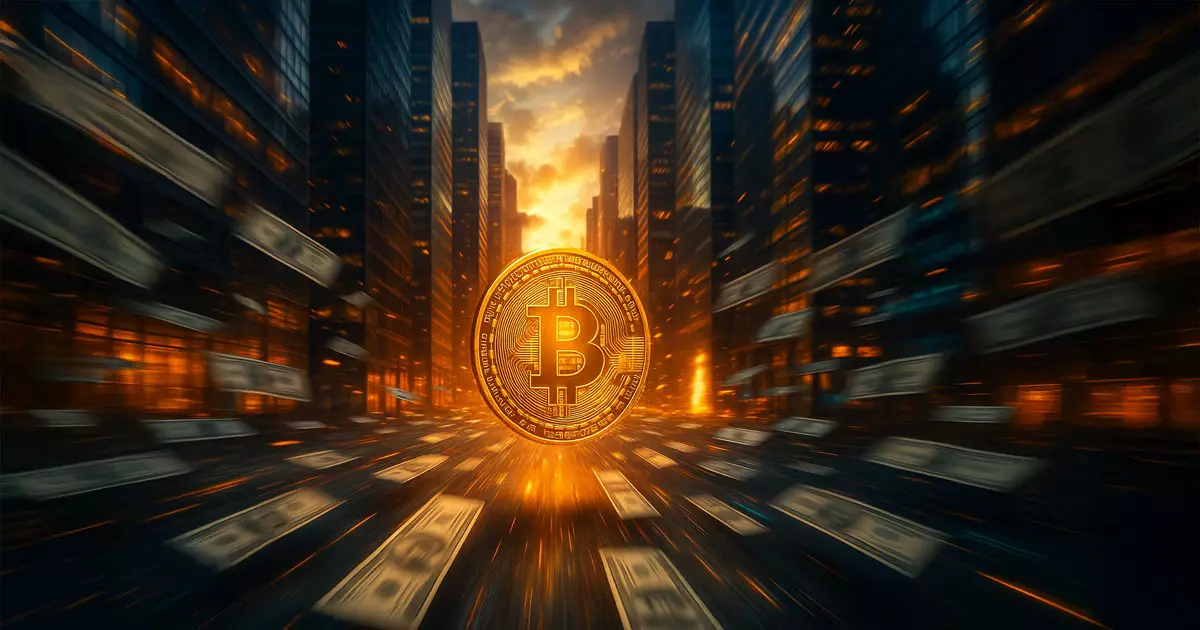Bitcoin, the flagship cryptocurrency, has long been characterized by volatile price fluctuations and fervent trading activities. However, recent reports highlight a concerning trend: Bitcoin inflows into Binance, one of the world’s largest cryptocurrency exchanges, have plummeted to a mere 5,700 BTC. This figure stands in stark contrast to the average monthly inflow of around 12,000 BTC since 2020, signaling a dramatic decrease in active market participation. Such an alarming decline raises critical questions about what it means for the future of Bitcoin and the broader cryptocurrency market.
Market Dynamics: Changing Behaviors of Bitcoin Holders
The current inflow figures reflect a pivotal shift in the behavior of Bitcoin holders. Data indicates that material deposit surges in the previous cycle were consistently aligned with peak price points, a correlation that cannot be overlooked. Every time holders transferred significant quantities of Bitcoin into exchanges like Binance, it often prefaced short-term market corrections. This pivot towards holding suggests a collective decision among traders—both retail and institutional—to refrain from active trading, indicating a profound decline in trading confidence. It’s as if a large contingent of holders is intuitively betting on the currency’s long-term value, choosing to sidestep immediate gains for potential greater rewards down the road.
A Possible Holding Phase or a Prelude to Panic?
CryptoQuant analyst Darkfost has described this phenomenon as a “holding phase,” where key market players choose to keep their assets off exchanges. Quite frankly, when fewer Bitcoins are available for immediate liquidation, supply constraints can bolster prices—given that demand remains robust. Such conditions create fertile ground for price surges. However, the crux of the matter lies in understanding whether this holding phase is a calculated strategy or a lurking panic. With Bitcoin hovering around the $105,000 mark and historical context demonstrating that inflows often surge during peak volatility, one must approach these trends with caution.
Liquidity and Uncertainty: The Silent Threats
It’s imperative to acknowledge the broader economic environment impacting Bitcoin. Darkfost raised flags about macroeconomic uncertainties, which historically could plunge liquidity levels and send price cascades tumbling. An unpredictable event—be it geopolitical unrest or market crash—could induce a shockwave, triggering a stampeded influx of deposits as holders rush to sell. The market appears to be teetering on a precipice where the actions of a few can unbalance the many. With Binance accounting for approximately 37% of trading volumes among centralized exchanges, the trends set here are telling—not just for Binance but for the ecosystem at large.
The Road Ahead: Monitoring Marquee Metrics with Caution
This precarious situation necessitates the vigilant observation of Bitcoin’s inflow trends as indicators for broader market sentiments. Analysts favor inflow statistics over outflows to mitigate distortions caused by custodial movements, illustrating a manufacturers market sentiment. Moreover, as Darkfost articulated, crossing back towards the long-run mean inflow of 12,000 BTC could signal renewed liquidation intentions—a forewarning that something astir within the market. The crypto community must remain steadfast, questioning not just the future price of Bitcoin but the very frameworks and investor psychology driving this dynamic landscape.
This narrative of declining inflows and shifting holder behavior should elevate discussions about the future of Bitcoin as a financial instrument, urging participants to critically evaluate not just their positions but the collective trajectory of this technology.















Leave a Reply